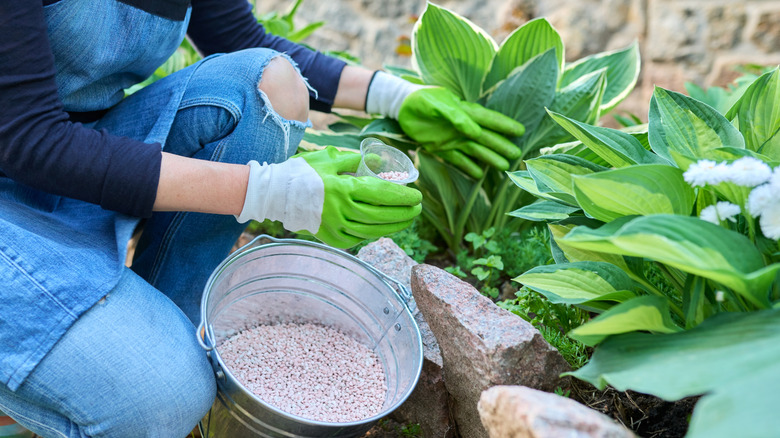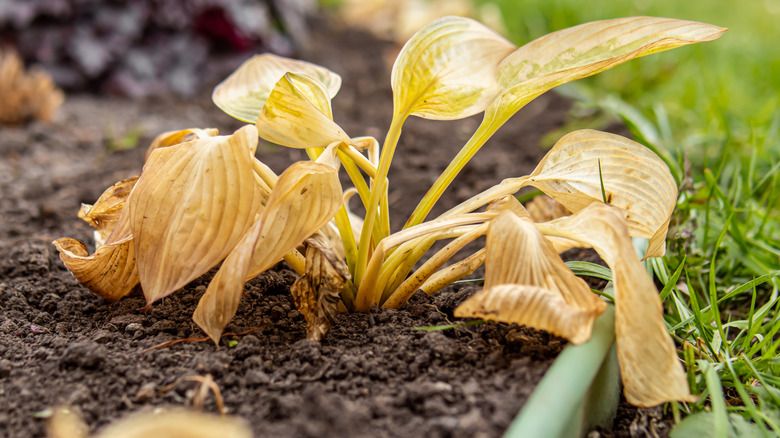The Hosta Fertilization Mistake That Increases The Chance Of Winter Damage
There's something you should know about caring for hostas — you know, those low-maintenance perennials that make your garden look fuller on a budget. The little-known care tip is that you should not fertilize your hostas after the end of July. Hostas take their beauty sleep very seriously, requiring a period of dormancy about two months long at temperatures less than 40 degrees Fahrenheit in the winter. Fertilizing your hostas in late summer or fall could delay their natural shift into dormancy.
Plants release hormonal signals that are triggered by changes in the sun position, day lengths, and temperature in fall. These hormones help the plant's cells wind down and prepare for cold acclimation. A period of dormancy helps hostas survive the winter, but it also provides a rest period in which roots feed on nutrients the plant stored earlier in the year. Fertilizer-stimulated growth may also mean that any new foliage emerging late in the season could be damaged by the first frosts of fall and winter. Bottom line: Put late-summer fertilization on your list of mistakes to avoid when growing hostas.
Fertilizing in late summer makes the plants ill-prepared for winter
It's natural for hostas to die back at the first frost. Once temperatures drop to 28 degrees Fahrenheit or below, the hosta foliage will die back, but fertilizing could cause the plant to expend valuable energy into growing new leaves — only for them to die off in a few weeks. It's better to avoid fertilizing and allow the plant to reserve its nutrients and settle into dormancy. Freezing or near-freezing temperatures experienced during the winter dormancy period will actually help hostas emerge earlier in the spring and promote healthy plant growth.
Although an argument exists for leaving the foliage to provide winter insulation, it's generally a good idea to remove dead leaves, especially so they don't host slugs. Mulch can be used to regulate soil temperature. Keep an eye out for signs of heaving, where the plants roots become increasingly exposed as winter's freeze-thaw cycle pushes plants up from the soil.
When hosta leaves start to appear in the spring, you can consider fertilizing. Hostas don't actually need much, so it's always a good idea to do a soil test to discover any nutrient deficiencies before you fertilize. You can apply compost or a balanced fertilizer in the spring and again when the hostas flower. Avoid fertilizers that are heavy on nitrogen, but slow-release and liquid fertilizers are often recommended to successfully care for hosta plants.

